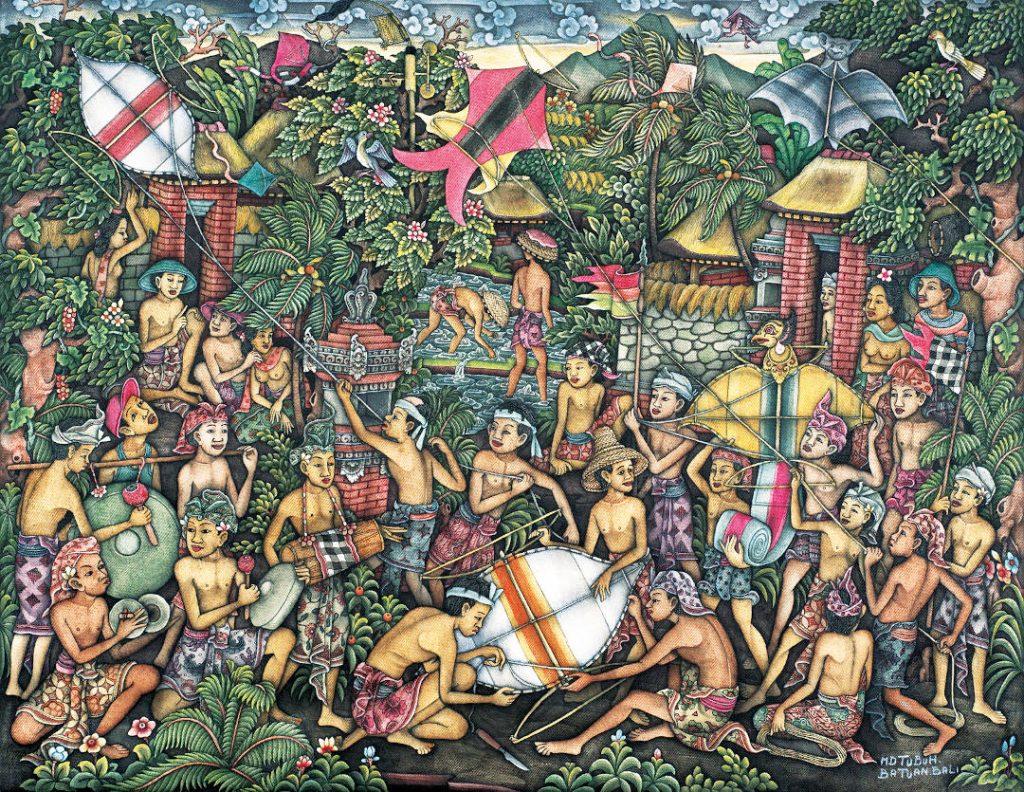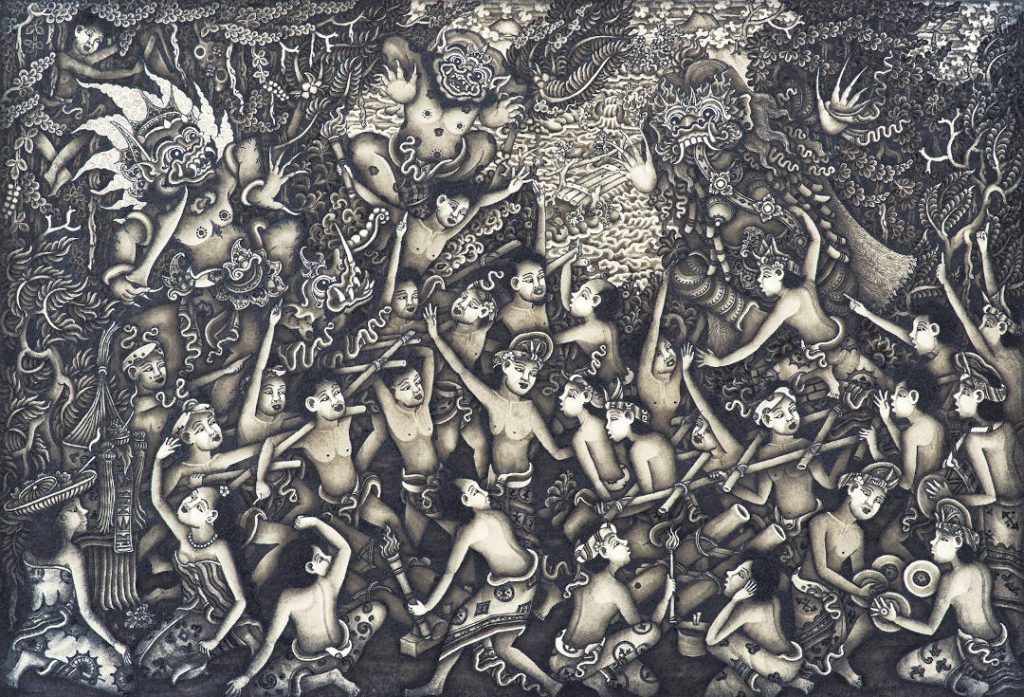With the Batuan painting style, daily life has long been an inspiration for the artists. Here, Bruce Granquist shares how the everyday diversions of the Balinese inspired certain painters.

I Made Tubuh
50×65 cm Canvas
2009
These pages show three paintings by artists in some way connected to the painting studio of I Made Jata, the most active art teacher in Batuan. The most senior of the three is I Made Tubuh (who was one of Jata’s early students). Next is I Made India (who studied with Bukel, a student of Tubuh and Budi), and the last painter is I Wayan Dana Wirawan (whose father and teacher Wasika, also a student of Tubuh).
These networks of teaching and learning were fluid and complex, and underscore the role of group effort in traditional Balinese painting. The uniformity of representational conventions is typical of the artists associated with this group. It is possibly a reflection of Jata’s collaboration with the Dutch painter Rudolf Bonnet, whose more academic approach to teaching filtered through Jata’s early teaching style.

I Made India
50×70 cm paper
2008
Seen at the upper right, kite flying has long been a favourite pastime of Batuan’s residents. On windy afternoons, kite flyers try out their constructions in the open area between Banjar Pekendalan and Banjar Puaya. Some kites become so large that they require several full grown men to carry them to the lofting field.
Seen at the lower right, rope pulls were popular diversions in the 1980’s but their popularity has run its course and they are rarely held today. This painting shows an entertainment by and for the villagers themselves, this is not an event put on for visitors. The main participants are men and boys, the only women present are selling snacks and drinks.

I Wayan Dana Wirawan
22-32 cm Paper
2007
Ogoh Ogoh are larger-than-life size puppets depicting grotesque beasts, they are used in the Mardi Gras- like activities held immediately before the solemn and purifying day of silence called Nyepi. This version shows the development of this tradition since the 1980’s, from its more humble rituals shown at the bottom, to the more flamboyant excesses of today’s Ogoh Ogoh seen at the top.Seen on the facing page, Dana has built up the dark areas with many layers of thin black ink until they reach the distinctively deep and rich tones found in his work.






